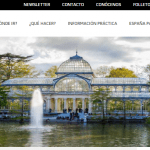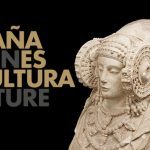Social media is providing us with information used to design recovery strategies for destinations, according to many different experts during the “Social media strategy for tourist destinations during COVID-19” webinar organised by SEGITTUR and the Spanish Agency for International Development Cooperation (AECID).
The webinar, coordinated by the AECID Centre in Santa Cruz de la Sierra (Bolivia), was opened by the director of the Centre, Ignacio Ayala Andrés, and the Chairman of SEGITTUR, Enrique Martínez.
During the COVID-19 pandemic, tourist destinations and resources have had to reinvent themselves in terms of communication, using this opportunity to demonstrate empathy with potential visitors, leaving “Call to action” acts to one side and reminding visitors they hope to see them again soon.
The CEO of Interface Tourism Spain, Chris Pomeroy, noted that “During a time in which we cannot sell, we can take the chance to get to know our customers better.” Pomeroy added that “During COVID-19, social networks are an active listening tool, providing us with information we can use to design recovery strategies for destinations.”
The academic director of Growtur, Raquel Lora, emphasised that before designing a destination’s social media strategy, it needs to define the destination’s essence (values, identity), develop a story in which all the connected agents participate, select the innovative tools to use and decide how to communicate (channels, formats, tone).
To Leire Bilbao, manager of the Visit Benidorm Foundation, the best way to convey safety and trust to encourage tourists to visit us again is “To have implemented all the necessary health and safety measures. Once you’ve done so, you just need to spread the word. But we can’t blow smoke on social networks: communication needs to be based on reality.”
Bilbao commented that during lockdown, Benidorm’s social media strategy went through several stages. Firstly, they shared the message that people needed to stay at home, then they reminded tourists that Benidorm was waiting for them and since then they have continued to share messages to convey that the measures introduced make Benidorm a safe destination.
The director of Marketing and Publicity at the City of Arts and Sciences in Valencia, María Ángeles Laporta, noted that during lockdown, as it wasn’t possible to visit the physical site, they focused their social media messages on sharing science, promoting virtual visits and creating easy-to-understand scientific content.
During the webinar, she talked about one of the fastest-growing social networks: TikTok, which had 800 million users and an average daily consumption of 70 minutes during lockdown. The experts agreed that this is a way for people to get to know the destination more intimately, and although its format requires more elaborate content than other social networks, this is made up for by the fact that content lasts on it for longer.
Over 60 representatives from 14 different countries and from institutes related to tourism participated in the webinar, including Argentina, Brazil, Costa Rica, Colombia, Ecuador, El Salvador, Guatemala, Haiti, Honduras, Mexico, Paraguay, Peru and Uruguay.





